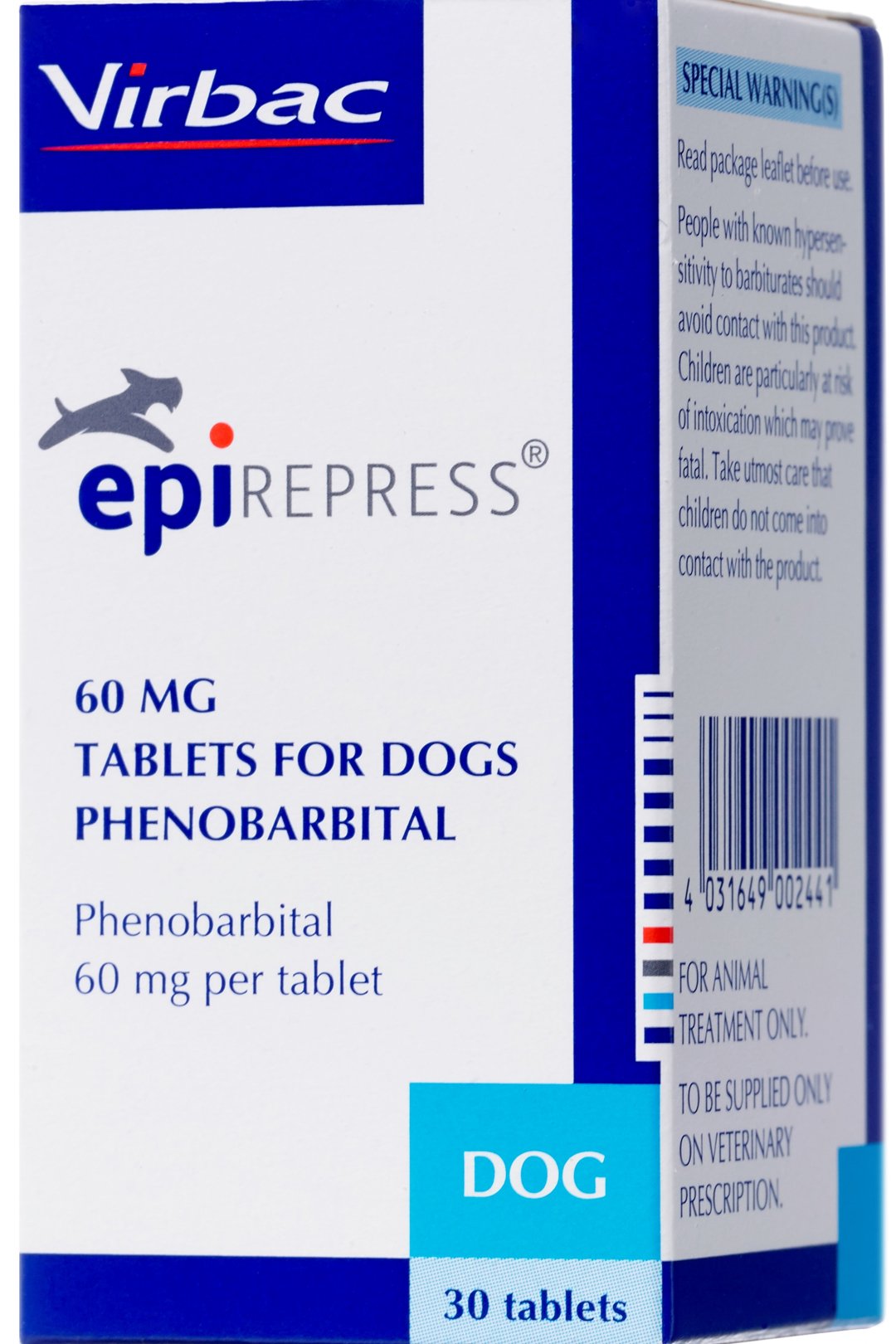Seizures can occur in as many as 5% of dogs. They can even be fatal. This article will show you how to identify if a patient is experiencing a seizure and if there are underlying causes that need treatment.
Epilepsy in dogs can be a serious condition. It is estimated to affect 1/20 dogs. An essential skill for small animal practitioners is good working knowledge.
The clinician must ask 4 questions when a patient presents with an episode of unusual behavior or movement.
- Is it true that the owner describes the events (or records them on video) as a seizure?
- Is it possible to identify and treat the underlying cause of the seizure, rather than treating the seizure alone?
- Do you need to administer an anti-epileptic medication (AED)?
- Which AED should you choose if medical therapy is being pursued?
Epilepsy is a neurological condition that an animal is born with. It cannot be treated. Epilepsy treatment for dogs aims to ‘control’ seizures.
Although some epilepsy drugs can make certain animals seizure-free for a few, it is possible to reduce the severity and frequency of seizures in dogs with effective treatment.
It is important to realize that seizures can still occur even if the animal is receiving treatment. Despite adequate therapy, seizure control may not be possible in as many as one-third of the animals.
Table of Contents
What is epilepsy or Seizures in Dogs?
Dogs are most often diagnosed with seizures. A seizure can also be called convulsions or fits and is a temporary, involuntary disturbance to normal brain function. It is often accompanied by uncontrollable muscular activity.
“Epilepsy” is a term that describes repeated episodes of seizures.
Epilepsy refers to repeated seizures. Epilepsy can present as a single episode or in clusters. They can also occur frequently and can be unpredictable.
Seizures can be caused by many things. Although idiopathic epilepsy is the most common cause, it is not known what the exact cause of seizures is. According to the latest research, even indoor toxins can be the cause of seizures in dogs. Brain tumors, brain trauma, and liver disease are all possible causes.
“Idiopathic epilepsy” is the most common cause of seizures in dogs.
Seizures can occur when brain activity is changing, such as while the dog is excited or eating, falling asleep, or getting up. Affected dogs can appear completely normal between seizures.
What happens in a seizure in dogs?
Three components make up the seizures:
Component 1: The pre-ictal period
The pre-ictal period (aura) is a time when the dog’s behavior changes. It may hide, seem nervous, or seek out its owner.
You may notice nervousness, restlessness, whining, or shaking. It may last from a few seconds up to several hours. The seizure activity begins with this period as if the dog is detecting that something is coming.
Component 2: The ictal stage
The ictal stage can last for a few seconds or several minutes, and it can appear in varying ways.
You may experience mild to severe mental changes, including a dazed appearance, slight shaking, staring aimlessly, and licking your lips.
Grand mals, which are full-blown seizures with loss of consciousness, can cause all the muscles in the body to move erratically and spastically.
The dog will often fall on its back and paddle its legs, appearing paralyzed. The dog’s head may be pulled backward. There may be urination, defecation, and salivation.
The dog may be in status epilepticus (or prolonged seizure) if the seizure does not stop within five minutes.
Component 3: The post-ictal period
The post-ictal period, which is the time immediately following the seizure ends, causes confusion, disorientation, and salivation. There is no direct correlation between the severity of seizures or the duration of the post-ictal phase.
Dog seizures treatment
The treatment is typically started after the pet has:
- 1) More than one seizure per month
- 2) Clusters of seizures in which one seizure is followed immediately by another.
- (3) Grand mal seizures, which are severe or last for a prolonged period.
Phenobarbital or potassium bromide is the most common medication used to treat seizures in dogs. There is a lot of research into other anticonvulsants.
Newer anticonvulsants like zonisamide (brand names Zonegran) or levetiracetam, (brand names Keppra), are becoming more and more popular. Dogs that are not responsive to standard treatment often use combination therapy.
Anticonvulsant medication must be continued for life after it is initiated. Anticonvulsant medication should not be stopped abruptly. This could lead to more severe seizures.
Even dogs with no history of epilepsy or seizures can be inflicted by anticonvulsant medication abruptly being stopped.
Your veterinarian will provide you with specific instructions if anticonvulsant medication needs to be stopped or modified.
Most epileptic dogs can have a good quality of life. Epilepsy can be a progressive and chronic disease. This must be managed. Rarely, a dog will have one seizure but not another.
A pet that experiences more than one seizure will likely have more severe or frequent seizures in the future. Evidence suggests that epilepsy treatment early in its course can lead to a better long-term outcome.
Epileptics may still experience intermittent seizures despite treatment.
Although full remission is possible with treatment, our goal for most patients is to reduce seizures by at minimum 50% in a period of four weeks.
Seizures should also be less severe. 25-33% of epileptic dogs will need multiple medications to manage their seizures. Cats may also need multiple medications.
When more than two seizures occur within a six-month period, epilepsy should be treated.
Many anti-epileptic drugs are available to treat epilepsy. The type of epilepsy your pet has, as well as licensing, formula, and cost considerations will help determine the best AED.
For the treatment of primary epilepsy, two drugs are licensed: Phenobarbital (commonly known as EpiphenTM) or Imepitoin. Uncontrolled epilepsy in dogs is treated with potassium bromide, which is sold under the tradename LibromideTM.
We have a lot of experience with treating cats with phenobarbital, but no medication is available for cats.
We’ve had to deal with AEDs that were only licensed for humans but are used in animals. These medications should not be used as a first-line treatment for epilepsy in dogs unless there are exceptional circumstances.
This is due to the fact that dogs are more likely to metabolize these medications quickly than humans and are therefore less effective than people.
Side effects can be expected with most AEDs. These side effects tend to be more severe in the first few weeks and may diminish over time.
Side effects that are dose-dependent include increased thirst, hunger, urination, weight gain, lethargy, and panting.
Talk to your primary care veterinarian or neurology practitioner about the possible side effects of medication.
Dog seizure medication: 6 best medicine for seizures in dogs
It can take some time to find the right medication for your dog. Treatment aims to prevent seizures from happening in dogs and reduce the severity of seizures that do occur.
Your vet will assess your dog’s health and consider whether there are any other conditions.
Most dogs with seizures respond to phenobarbital and potassium bromide. If these drugs fail to suppress seizures, other treatments may be considered.
Primidone
Dogs with seizures that aren’t responding to anti-convulsive medications like phenobarbital or phenylethylmalonamide (PEMA) are usually prescribed primidone.
When administered, this drug is converted to phenobarbital and phenylethylmalonamide (PEMA) by the dog’s system and can be effective in suppressing seizures.
Primidone side effects in dogs include dizziness, hives, and drowsiness.
Phenobarbital
Phenobarbital dosage for dogs
Phenobarbital is known for its safety, efficacy, and low cost. It also makes it easy to monitor serum levels.
Phenobarbital can be administered at 2-4 mg/kg/day for long-term maintenance in dogs. The serum therapeutic concentrations range from 15 to 45 mcg/mL.
The history of seizure control should inform the dosage. Dogs who have been treated for a prolonged period of time may become more sensitive to phenobarbital therapy. This can lead to decreased seizure control.
However, a 25 percent increase in dose will usually result in better seizure control.
For decades, phenobarbital has been used to treat seizures in dogs. It is often the first medication that vets prescribe for dogs with seizures.
Phenobarbital is believed to reduce seizure frequency by 50% in as many as 80% of dogs. To achieve a satisfactory level of seizure control, this medication can be taken alone or in combination with anti-seizure drugs.
Your dog will need to be checked for phenobarbital while on the medication. It is important to balance the therapeutic dose of the drug with the need to prevent excessive levels from reaching your dog’s bloodstream.
Dogs can develop liver disease from excessive phenobarbital use. The optimal dosage can change over the course of your pet’s life. Your dog may experience a change in their dosage while they are on phenobarbital.
Phenobarbital can also cause a temporary sedative effect for dogs within the first few days. Also, your dog may experience a marked increase in its appetite and thirst.
Side effects of phenobarbital in dogs
Side effects that dogs may experience include anxiety, agitation, and lethargy. Therapy can also cause increased thirst, urination, appetite, and elevated liver enzymes. Incoordination and other side effects may be a sign that the dose is too high. A decrease in blood cell count may occur less often.
It is rare to see liver dysfunction signs (yellowing of skin, vomiting, anorexia, and abnormal bloodwork), or liver enzymes that are 4-5x higher than normal should be taken immediately. Phenobarbital should be discontinued.
The moderate-acting medication should cease working within a few days. However, pets suffering from liver disease or kidney disease may experience longer-lasting effects.
Levetiracetam (Keppra)
Your vet may recommend levetiracetam if your dog’s seizures are not controlled with phenobarbital and potassium bromide.
Levetiracetam (brand names: Keppra®, Elepsia®, Spritam®) is an anticonvulsant used to treat seizures and epilepsy when seizures are difficult to control with other drugs. It has very few side effects. This medication can be used alone to reduce seizure frequency in dogs.
However, it is often prescribed in combination with other drugs.
Zonisamide (Zonegran)
Zonisamide is rapidly becoming a popular treatment for seizures in dogs. You can use this drug alone or with anti-convulsion medication.
This drug can cause side effects such as sedation, decreased appetite, coordination problems while walking, nausea, and vomiting.
Per Rectal Diazepam
This will not be a good solution for many pet owners. However, rectal diazepam is an effective treatment for dogs that experience cluster seizures frequently.
Cluster seizures can be defined as two or more seizures in a 24-hour period. Per rectal diazepam can be given after a seizure to reduce the severity and number of subsequent seizures. It can be administered 3 times in 24 hours.
Potassium Bromide for dogs
Potassium bromide, an antiepileptic drug for dogs, is used to treat seizures in dogs who are unable to tolerate phenobarbital or have seizures that cannot be controlled with phenobarbital. Potassium bromide decreases seizure activity in the central nervous system.
Potassium bromide is an effective anticonvulsant drug for dogs. This medication can be used to treat seizures in up to 52% of dogs. About 70% of dogs experience a 50% or greater reduction in their seizure frequency.
It can take some time for your dog to attain stable therapeutic levels. This means that regular blood testing is necessary.
Some dogs have developed pancreatitis from taking potassium bromide. If your dog is receiving potassium bromide to lower the frequency of seizures, pancreatitis can be a serious condition. Regular blood levels monitoring is essential.
You may notice your dog feeling sedated when you start giving this medication to him. You should notice a decrease in the sedative effects over time.
Stop a dog from having a seizure
Stress can trigger seizures. It is important to reduce stress and limit the environment your dog lives in.
It is important to feed your dog a healthy diet, keep an eye on their sugar levels and have them checked by your vet regularly.
Increased muscle activity can lead to a rise in temperature in the case of a seizure. This can be mitigated by placing cold towels on the affected area or a fan in front. But, don’t cool them too much to cause hypothermia.
There are many natural ways to stop or prevent seizures in dogs. Some of the most common include:
Essential Fatty Acids
Both pet owners and veterinarians recommend that dogs be fed fatty acids regularly. You can buy Omega-3 supplements in the form of pills, oils, or sprays. One tablespoon per fifty-pound is the recommended dose. The size of your dog will determine how much Omega-3 you should give. Numerous studies on dogs and humans have shown that fatty acids can help to increase seizure thresholds, although they are not proven effective in stopping seizures.
Dietary changes
Dog seizures can be caused by foods containing dyes, especially red dye 40. Before giving their pets dog treats and foods, pet owners need to investigate them. Dogs can also be poisoned by other foods, including bell peppers, onions, chocolate, and grapes.
Homeopathic Oils
Oils are a popular option because they allow pet owners to give medicine to their pets during seizures. It is not possible to administer medicine to a dog during a seizure due to the fact that seizures can cause the jaws and teeth to lock up.
To avoid accidental biting, natural oils can be applied to the skin and gums of seizing animals. Homeopathic remedies are another natural way to treat seizures.
- Belladonna
- Aconite
- Choline or Cholidin
Acupressure
Acupressure can be used to ease tension in animals during seizures. You can press the pressure point just above the dog’s upper lip, at the base of their nose, and for up to one minute.
Melatonin
Night seizures can be treated by administering melatonin, a naturally occurring chemical that is released by the brain to induce sleep.
Honey
A teaspoon of honey is recommended for dogs with diabetes and hypoglycemia. This will depend on the frequency and severity of seizures. It is recommended that diabetes be controlled by a veterinarian.
Summary
It can be difficult to find the right combination of drugs and the best therapeutic dose to manage your dog’s seizures. Because high blood levels can cause liver disease or pancreatitis in dogs, it is important that vets take their time when increasing anti-convulsion medication dosages.
Your dog’s seizure treatment will require patience. Most dogs can reduce their seizure severity and frequency over time.
Seizures can be caused by many things. Epilepsy is the most common type of seizure in dogs.
However, it is often an inherited condition. Brain tumors, brain trauma, and liver disease are all possible causes. … Affected dogs can appear completely normal between seizures.
Hopefully, the basic knowledge about seizures in dogs in this article will help you if unfortunately, your dog has epilepsy. Please love and take care of it properly.
Full Dog Epilepsy Infographic
Epilepsy can be a lifelong condition for most dogs. Your veterinarian will recommend a routine of care and treatment.
Canine seizures are caused by abnormal electrical activity in the brain. This causes sudden, but temporary disturbances in your dog’s behavior and movements.
Status epilepticus is also known as epilepsy. It refers to neurologic abnormalities that cause repeated seizures.
These seizures can last longer than normal. These seizures can be caused either by trauma, brain tumors, infections, trauma, or problems with the blood or organs of your dog.
These seizures can cause your dog to lose consciousness. Your dog may become epileptic if he has more than one episode.
Dog epilepsy can be caused by a number of things, including brain tumors, toxins, and problems with certain organs. The causes of epilepsy are usually what distinguish the different types.
Although seizures can be caused by many different causes, we sometimes don’t know what causes them. These types of seizures are known as idiopathic. Certain breeds are more susceptible to the condition than others.
Some types of seizures can also be genetic and hereditary. Experts recommend that epileptic dogs not be bred, since the trait could be passed on to their offspring.
Below is the most general information about epilepsy presented in an infographic format to make it easy for you to understand. Save it for later use. (Click on the image to view and save the image in large size)







